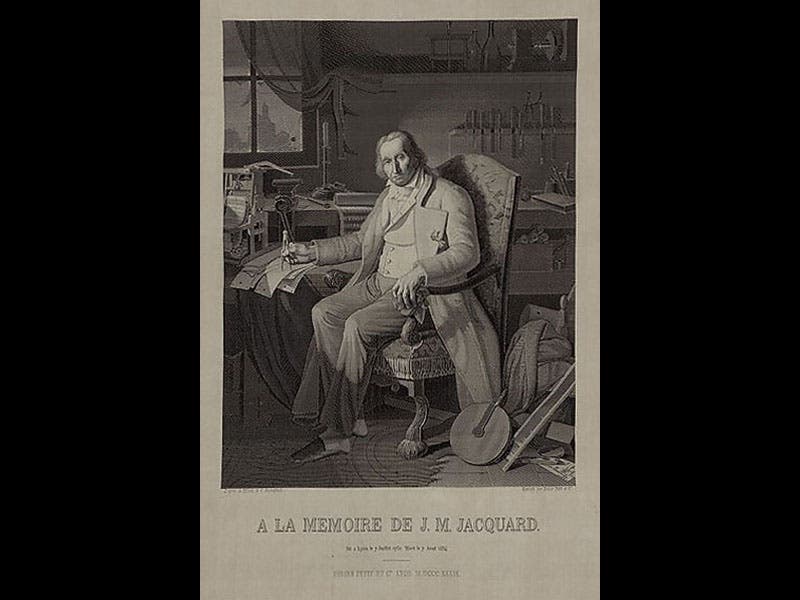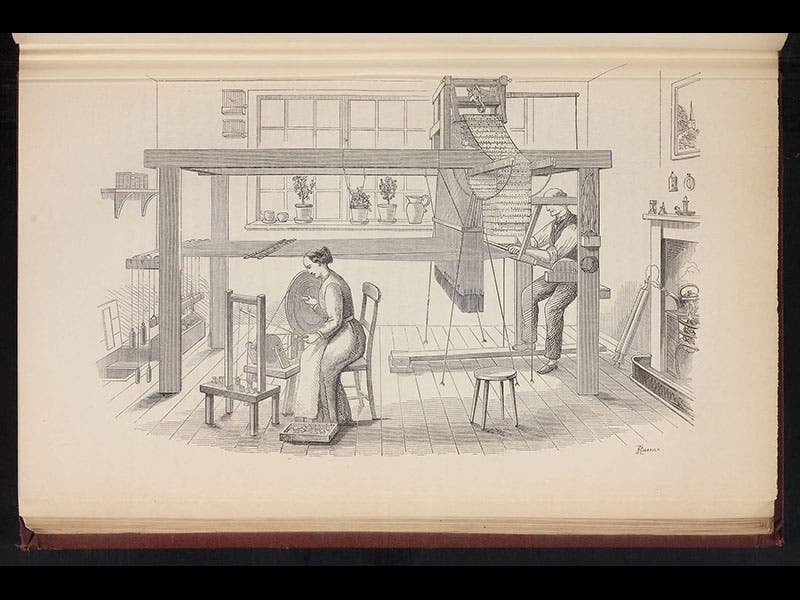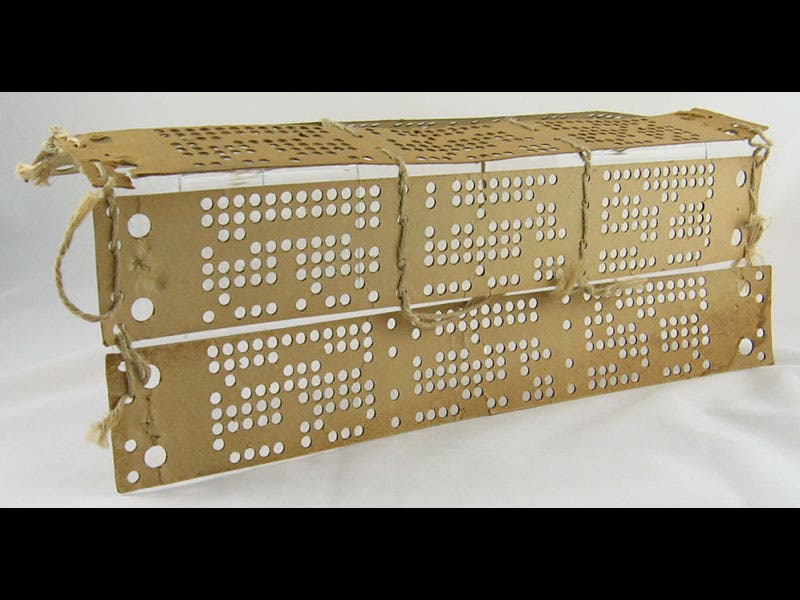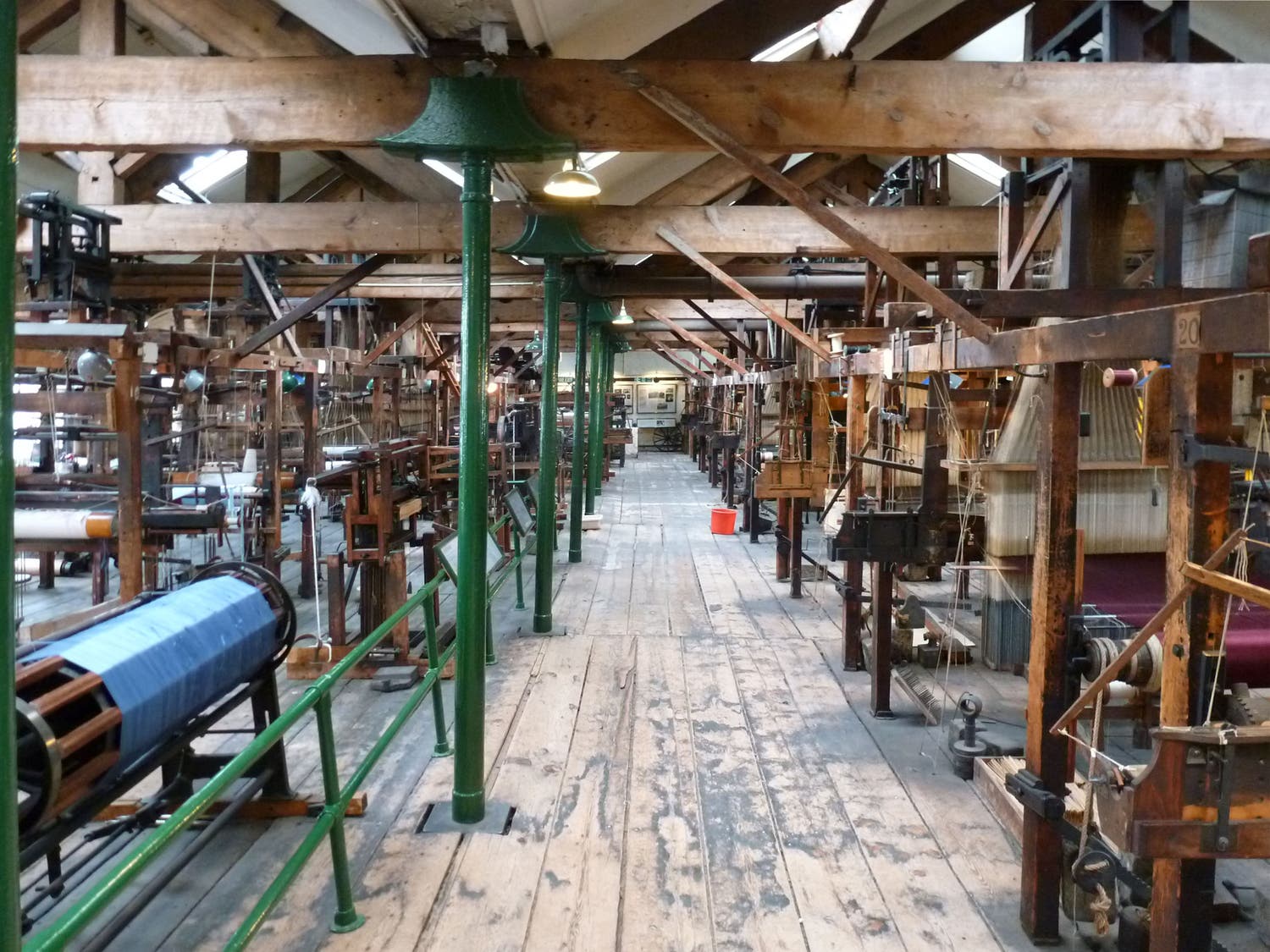Scientist of the Day - Joseph-Marie Jacquard
Joseph-Marie Jacquard, a French inventor, was born July 7, 1752. Joseph’s father was a silk weaver in France, and Joseph grew up in the trade. Silk-weaving was a very laborious and time-consuming process, requiring lots of assistants (called drawboys) to manipulate the warp, with a loom producing perhaps an inch of fabric a day. In 1804, Joseph unveiled what is now called the Jacquard loom, which did away with the draw-boys entirely, and greatly increased the speed of production. The secret was a series of punched cards, which controlled the warp threads that were to be raised or lowered for a given pass of the weft thread. A hole in a card allowed a rod to pass through, raising a warp thread, while the lack of a hole kept the thread down. After the shuttle passed through, a new card moved into place, with a new series of settings for the warp. The process was so efficient that a weaver could produce nearly 2 feet of cloth a day, 24 times greater than before. The drawboys were not happy, but the French government was; they commandeered the process, gave Jacquard a hefty pension, and soon thousands of Jacquard looms had brought France to the top of the silk-weaving industry.
In addition to bringing glory to France, the Jacquard loom has the honor of being the first “programmable” device, since all the instructions were contained in the cards, and if you change the cards, you change the pattern of the fabric being woven. When Charles Babbage, thirty years later, designed his Analytic Engine, the first real computer, he planned to program it with a series of punched cards, and he gave credit for the idea to Jacquard. You can see two images of 19th-century Jacquard looms above, one a simple machine for home-weaving (second image), the other an industrial model for weaving carpets (third image). We also show a close-up of some original Jacquard punch cards (fourth image). One of the best places to see historic Jacquard looms today is the Paradise Mill and Silk Museum in Macclesfield, England, just south of Manchester (fifth image).
In 1839, a Frenchman, Michel-Marie Carquillat, programed a Jacquard loom to weave a silk portrait of Jacquard. It required some 24,000 cards, and it is estimated that it took about 8 hours to produce a single portrait, which measures about 33” x 25”, including the border (the legend beneath is woven as well). We reproduce above (first image) the example at the Art Institute of Chicago; there are other specimens at the Met in New York and the Chemical Heritage Foundation (CHF) in Philadelphia. The last is a relatively recent acquisition, and to celebrate its arrival, an informative article about the portrait and Jacquard appeared in the CHF house organ, Distillations in 2015. It was written by Ben Gross, then at CHF, and now head of collections at the Linda Hall Library. He is looking for a way to add a similar portrait to our collection here.
Dr. William B. Ashworth, Jr., Consultant for the History of Science, Linda Hall Library and Associate Professor, Department of History, University of Missouri-Kansas City. Comments or corrections are welcome; please direct to ashworthw@umkc.edu.










